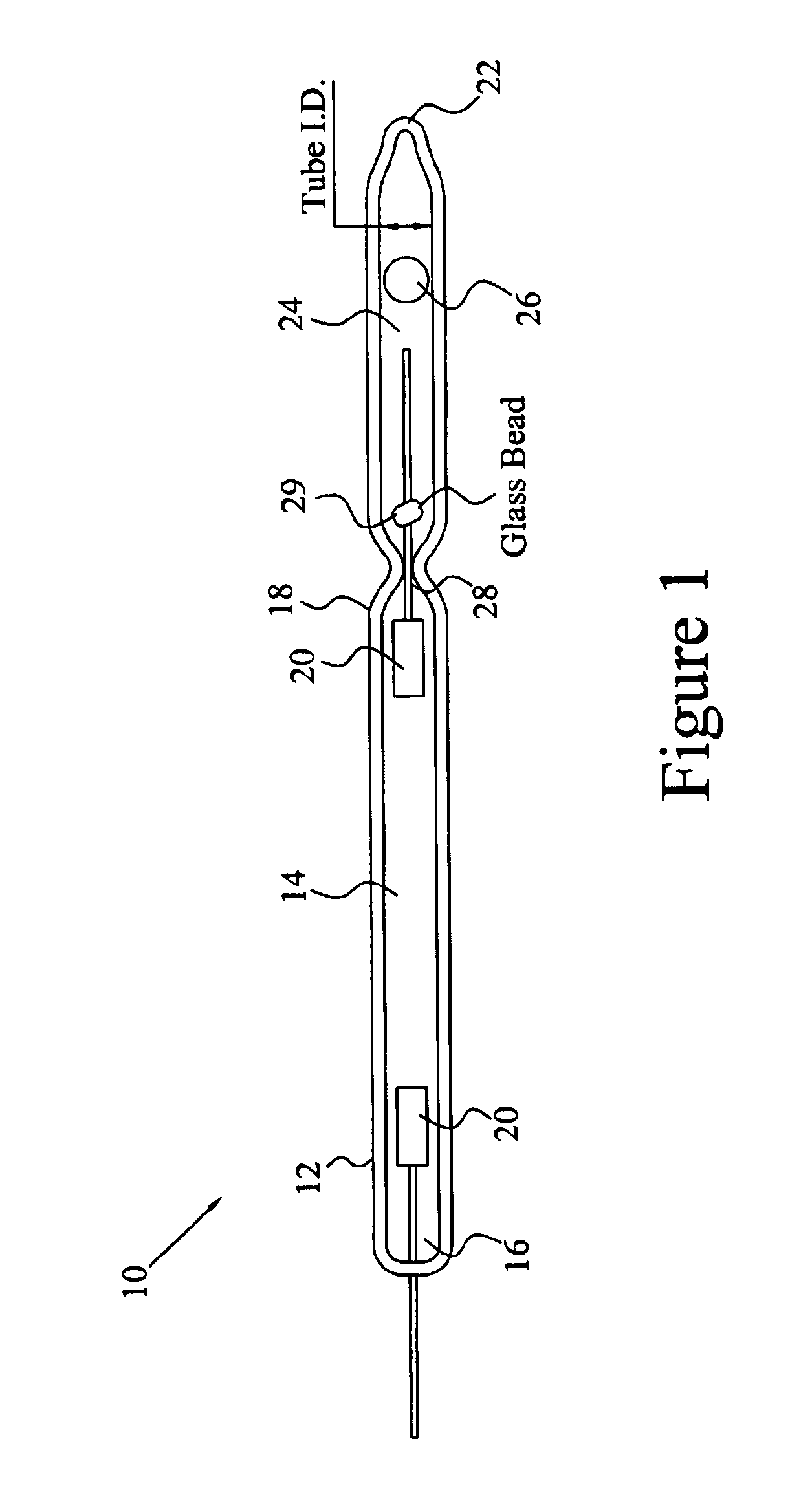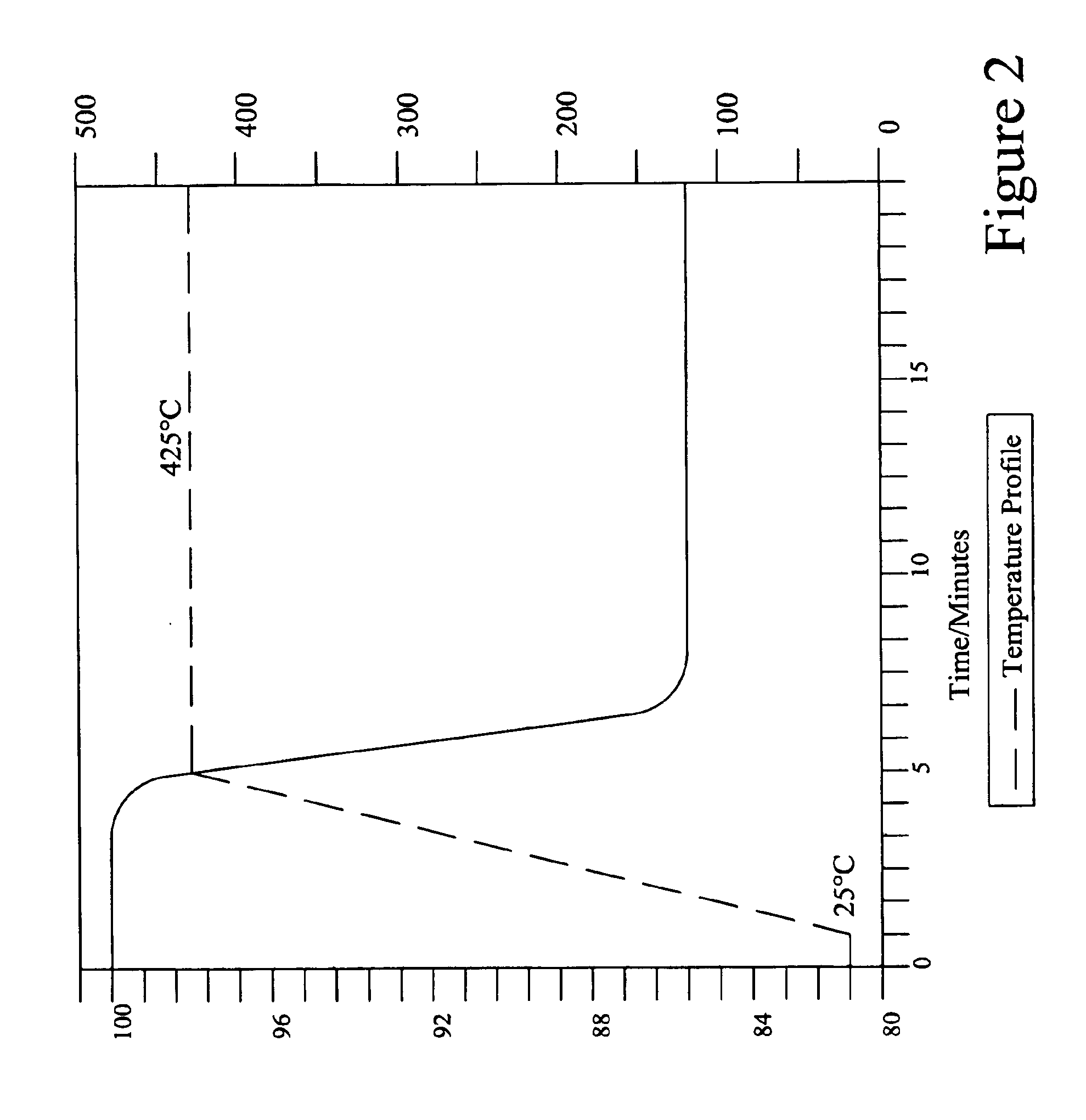Solid mercury releasing material and method of dosing mercury into discharge lamps
a technology of solid mercury and discharge lamps, which is applied in the manufacture of electric discharge tubes/lamps, cold cathode manufacture, electrode systems, etc., can solve the problems of affecting the precise dose of mercury using this method, affecting the release of mercury from amalgam, and affecting the effect of the discharge of mercury
- Summary
- Abstract
- Description
- Claims
- Application Information
AI Technical Summary
Benefits of technology
Problems solved by technology
Method used
Image
Examples
example 1
[0037]A particle is formed by admixing 16 g mercury with 48 g bismuth and 36 g tin, melting the admixture into a homogeneous melt, and solidifying the melt into 53 mg particles having a composition of about 16 weight percent mercury. The particles formed are generally spherical and have a diameter of about 2200 μm and a quantity of about 8.5 mg of mercury. FIG. 2 illustrates the mercury evolution from the particle when subjected to the illustrated temperature cycle in an atmosphere of argon at 1.4 torr.
example 2
[0038]A particle is formed by admixing 15 g mercury with 85 g indium, melting the admixture into a homogeneous melt, and solidifying the melt into 7.7 mg particles having a composition of about 15 weight percent mercury. The particles formed are generally spherical and have a diameter of about 1230 μm and a quantity of about 1.2 mg of mercury. FIG. 3 illustrates the mercury evolution from the particle when subjected to the illustrated temperature cycle in an atmosphere of argon at 1.6 torr.
example 3
[0039]A particle is formed by admixing 15.8 mg mercury with 184.2 g lead, melting the admixture into a homogeneous melt, and solidifying the melt into 6 mg particles having a composition of about 7.9 weight percent mercury. The particles formed are generally spherical and have a diameter of about 1000 μm and a quantity of about 0.47 mg of mercury. FIG. 4 illustrates the mercury evolution from the particle when subjected to the illustrated temperature cycle in an atmosphere of argon at 1.4 torr.
PUM
 Login to View More
Login to View More Abstract
Description
Claims
Application Information
 Login to View More
Login to View More - R&D
- Intellectual Property
- Life Sciences
- Materials
- Tech Scout
- Unparalleled Data Quality
- Higher Quality Content
- 60% Fewer Hallucinations
Browse by: Latest US Patents, China's latest patents, Technical Efficacy Thesaurus, Application Domain, Technology Topic, Popular Technical Reports.
© 2025 PatSnap. All rights reserved.Legal|Privacy policy|Modern Slavery Act Transparency Statement|Sitemap|About US| Contact US: help@patsnap.com



